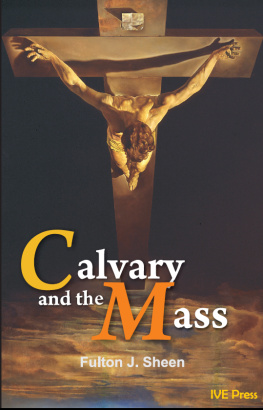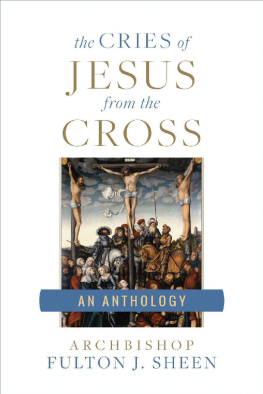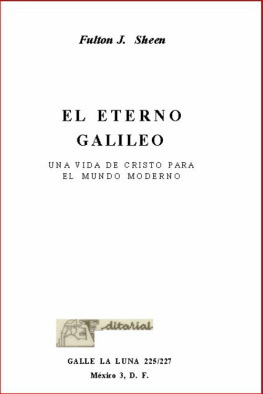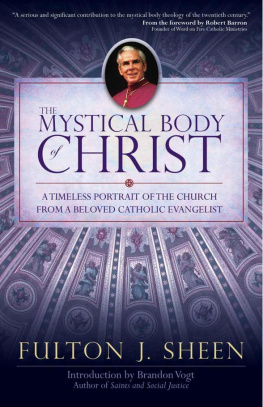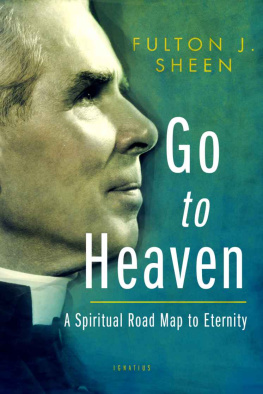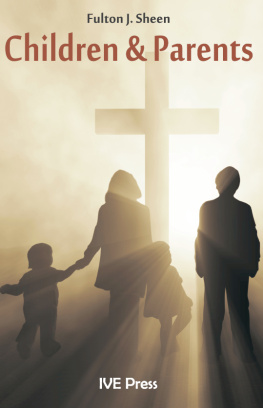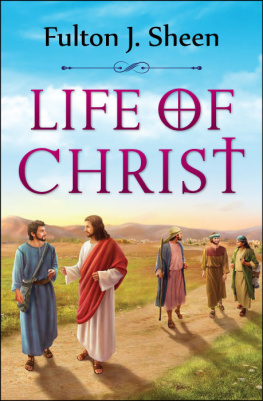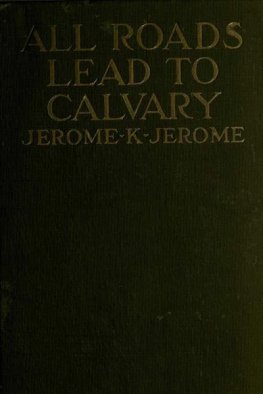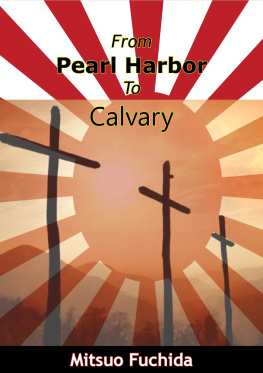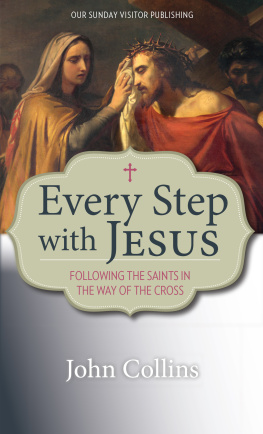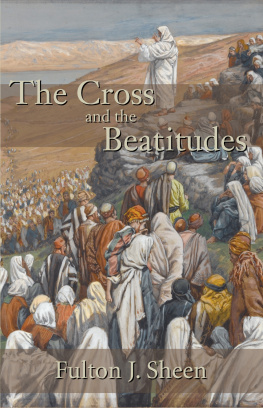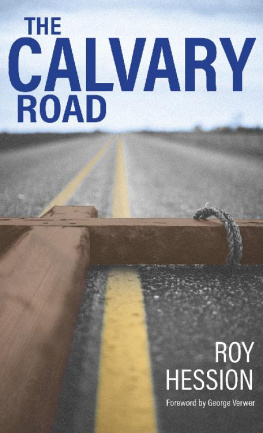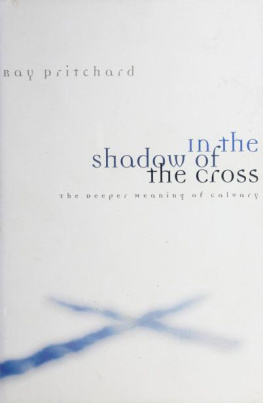

Imprimatur
+Patrick Cardinal Hayes
Archbishop of New York
New York,
Feast of Saint Patrick,
March 17, 1936.
Cover Design
IVE Press
Cover Art
IVE Press
Text
National Society for the Propagation of the Faith
Institute of the Incarnate Word, Inc.
All right reserved.
Manufactured in the United States of America
113 East 117th Street
New York, NY 10035
Ph. (212) 534 5257
Fax (212) 534 5258
E-mail
http:// www.ivepress.org
ISBN 17. 978-1-933871-83-7
Catalogued in the Library of Congress of the US.
Printed in the United States of America
Calvary and the Mass
Fulton J. Sheen
ebook Edition
Produced by 
1111 Plaza Drive, Suite 300
Schaumburg, IL 60173
Enquiries:
www.ebooks2go.net
ISBN 13: 978-1-933871-83-7
ISBN 10: 1-933871-83-0
Dedicated
in filial love and
gratitude
to
MARY
Mother of the Priesthood
of
Her Divine Son
PROLOGUE
Calvary and the Mass
Calvary and the Mass
PROLOGUE
THERE are certain things in life which are too beautiful to be forgotten, such as the love of a mother. Hence we treasure her picture. The love of soldiers who sacrificed themselves for their country is likewise too beautiful to be forgotten, hence we revere their memory on Memorial Day. But the greatest blessing which ever came to this earth was the visitation of the Son of God in the form and habit of man. His life, above all lives, is too beautiful to be forgotten, hence we treasure the divinity of His Words in Sacred Scripture, and the charity of His Deeds in our daily actions. Unfortunately this is all some souls remember, namely His Words and His Deeds; important as these are, they are not the greatest characteristic of the Divine Saviour.
The most sublime act in the history of Christ was His Death. Death is always important for it seals a destiny. Any dying man is a scene. Any dying scene is a sacred place. That is why the great literature of the past which has touched on the emotions surrounding death has never passed out of date. But of all deaths in the record of man, none was more important than the Death of Christ. Everyone else who was ever born into the world, came into it to live; our Lord came into it to die. Death was a stumbling block to the life of Socrates, but it was the crown to the life of Christ. He Himself told us that He came to give his life a redemption for many; that no one could take away His Life; but He would lay it down of Himself.
If then Death was the supreme moment for which Christ lived, it was therefore the one thing He wished to have remembered. He did not ask that men should write down His Words into a Scripture; He did not ask that His kindness to the poor should be recorded in history; but He did ask that men remember His Death. And in order that its memory might not be any hap-hazard narrative on the part of men, He Himself instituted the precise way it should be recalled.
The memorial was instituted the night before He died, at what has since been called The Last Supper. Taking bread into His Hands, He said: This is my body, which shall be delivered for you, i.e., delivered unto death. Then over the chalice of wine, He said, This is my blood of the new testament, which shall be shed for many unto remission of sins. Thus in an unbloody symbol of the parting of the Blood from the Body, by the separate consecration of Bread and Wine, did Christ pledge Himself to death in the sight of God and men, and represent His Death which was to come the next afternoon at three. He was offering Himself as a Victim to be immolated, and that men might never forget that greater love than this no man hath, that a man lay down his life for his friends, He gave the divine command to the Church: Do this for a commemoration of me.
The following day that which He had prefigured and foreshadowed, He realized in its completeness, as He was crucified between two thieves and His Blood drained from His Body for the redemption of the world.
The Church which Christ founded has not only preserved the Word He spoke, and the wonders He wrought; it has also taken Him seriously when He said:
Do this for a commemoration of me. And that action whereby we re-enact His Death on the Cross is the Sacrifice of the Mass, in which we do as a memorial what He did at the Last Supper as the prefiguration of His Passion.
Hence the Mass is to us the crowning act of Christian worship. A pulpit in which the words of our Lord are repeated does not unite us to Him; a choir in which sweet sentiments are sung brings us no closer to His Cross than to His garments. A temple without an altar of sacrifice is non-existent among primitive peoples, and is meaningless among Christians. And so in the Catholic Church the altar, and not the pulpit or the choir or the organ, is the center of worship, for there is reenacted the memorial of His Passion. Its value does not depend on him who says it, or on him who hears it; it depends on Him who is the One High Priest and Victim, Jesus Christ our Lord. With Him we are united, in spite of our nothingness; in a certain sense, we lose our individuality for the time being; we unite our intellect and our will, our heart and our soul, our body and our blood, so intimately with Christ, that the Heavenly Father sees not so much us with our imperfection, but rather sees us in Him, the Beloved Son in whom He is well pleased. The Mass is for that reason the greatest event in the history of mankind; the only Holy Act which keeps the wrath of God from a sinful world, because it holds the Cross between heaven and earth, thus renewing that decisive moment when our sad and tragic humanity journeyed suddenly forth to the fullness of supernatural life.
What is important at this point is that we take the proper mental attitude toward the Mass, and remember this important fact, that the Sacrifice of the Cross is not something which happened nineteen hundred years ago. It is still happening. It is not something past like the signing of the Declaration of Independence; it is an abiding drama on which the curtain has not yet rung down. Let it not be believed that it happened a long time ago, and therefore no more concerns us than anything else in the past. Calvary belongs to all times and to all places. That is why, when our Blessed Lord ascended the heights of Calvary, He was fittingly stripped of His garments: He would save the world without the trappings of a passing world. His garments belonged to time, for they localized Him, and fixed Him as a dweller in Galilee. Now that He was shorn of them and utterly dispossessed of earthly things, He belonged not to Galilee, not to a Roman province, but to the world. He became the universal poor man of the world, belonging to no one people, but to all men.
To express further the universality of the Redemption, the cross was erected at the crossroads of civilization, at a central point between the three great cultures of Jerusalem, Rome, and Athens, in whose names He was crucified. The cross was thus placarded before the eyes of men, to arrest the careless, to appeal to the thoughtless, to arouse the worldly. It was the one inescapable fact that the cultures and civilizations of His day could not resist. It is also the one inescapable fact of our day which we cannot resist.
Next page
